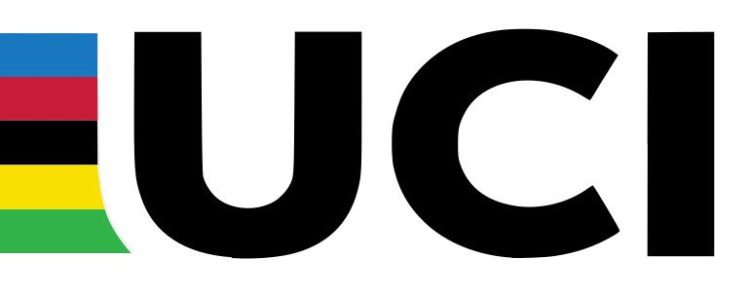Race Guide: The Tour de France
By Tim Perkin
The Tour de France is considered the biggest bike race in the world and takes place around France. It was first hosted in 1903 and has been held ever since (except when it was paused because of the two World Wars). It was the first bike race referred to as a ‘Grand Tour’ and has developed into a global phenomenon with countries now vying to host the start of the event, with the 2024 and 111th edition, starting in Florence, Italy.
History of the event
The first ever Tour de France was announced on 19th January 1903 and began on 1st July 1903, ending on 19th July. While Henri Desgrange, the Director-Editor of L’Auto (now L’Equipe) is widely credited as the founder, it was actually journalist Géo Lefèvre who suggested organising a race as a promotional strategy to increase sales for the newspaper. Together, they developed a 2,428km clockwise loop of the country that consisted of six stages.
The first ever winner was Maurice Garin and the inaugural tour featured a six-stage route that took riders from Paris to Lyon, Marseille, Toulouse, Bordeaux, and Nantes before returning to Paris. Unlike today’s modern team setups, the riders in those early Tours were individual competitors with no support crews following behind.
The now famous maillot jaune, or yellow jersey was not introduced until 1919. The newspaper, L’Auto, still a race organizer, printed their newspapers on yellow paper. Consequently, they introduced the yellow jersey to be worn by the race leader as a strategy to promote the newspaper and give the spectators the chance to see who was leading the race.
In the history of this iconic race, four riders have won the Tour de France five times, which is the record. These riders are Jacques Anquetil, Eddy Merckx, Bernard Hinault, and Miguel Induráin. Miguel Induráin is the only rider to have won the Tour five consecutive times. Eddy Merckx and Mark Cavendish share the record, having each claimed 34 stage victories.
Races within a race
This year, 176 riders will start the Tour on Saturday, 29th June, and they will be divided into 22 teams, consisting of 8 riders. Within the race, there are multiple opportunities for victory and hence, each team will apply their own strategy. The target for a select few riders will be to win the ‘General Classification.’ This is the overall race and is achieved by having the lowest accumulated time across the 21-stages. The rider with the lowest accumulated time wears the “Yellow Jersey” and this is the goal for any professional cyclist.
Apart from the yellow jersey, riders can win three more jerseys. There is ‘White Jersey’ which is awarded to the ‘Best Young Rider,’ under 25.
The ‘Polka Dot Jersey’ is awarded to the best climber and is earned by being the first over hills and mountains, where points are awarded. Accumulating these points determines the winner of the ‘King of the Mountains Classification’ and the subsequent jersey. This is often targeted by the climbers, but it´s not unusual for those battling for the General Classification to win.

(Image Source: Tour de France 2023 / Charley Lopez)
The last one, ‘Green Jersey’, also referred to as the ‘Sprinters’ jersey, is awarded to the rider leading the ‘Points Classification.’ Riders get Points awarded to them according to the position they finish each stage and additional points for intermediate sprint in some stages. The rider who accumulates the most points will wear the jersey. It is traditionally won by sprinters because of the volume of points awarded at the finish.
It is possible to win more than one jersey. In 1969 when Eddy Merckx won his first Tour de France, he won the Points Classification and King of the Mountains Classification. He is the only rider to win three jerseys in one Tour
Alongside the jerseys, there are other awards. The first one is the Team award, which is called the “Team classification.” This goes to the team with the lowest accumulated time taken overall from a select number of riders. The second award is given out to the most competitive rider of the day. This award is often given to the rider who made a daring attack or has been part of a breakaway. It is awarded every day, and one rider gets an overall award at the end of the tour. The last award goes to the last rider to cross the finish line and is called the ‘Lanterne rouge.’ Although this award has no prize money, the recognition itself holds significance.
Finally, the highlight and what riders desire the most is the stage victory. To win a stage can be the highlight of a rider’s career, as it is seen as equal to winning a Classic.
The General Classification Contenders
If all riders have recovered from their early season injuries, the upcoming race will feature a historic showdown, as the four main contenders for the yellow jersey will line up together on the start line for the first time this season. This includes two-time Tour de France winner and the defending champion, Jonas Vingegaard (Team Visma–Lease a Bike), two-times Tour de France winner, Tadej Pogačar (UAE Team Emirates), 2023 Giro d’Italia winner Primož Roglič (Bora–Hansgrohe) and 2022 Vuelta Espana winner and former World Champion, Remco Evenepoel (Soudal Quick-Step). Collectively, these four riders have won every Grand Tour and, in some cases, multiple times.
The last time three of them entered the same race, it did not end well. On Stage 4 of the Itzulia Basque Country, 35 kilometres before the finish, Jonas Vingegaard, Remco Evenepoel and Primož Roglič were involved in a season defining crash.
Jonas Vingegaard suffered a broken collarbone, multiple rib fractures, a pulmonary contusion, and a collapsed lung. Remco Evenepoel underwent surgery for his broken collarbone. Primoz Roglič fared the best and did not suffer any fractures but did abandon the race. These crashes have seriously impeded their preparation. That leaves Tadej Pogačar, who transitions directly from competing in the Giro d’Italia.
As a consequence of these injuries, it is difficult to predict how well the riders will have recovered and this adds an extra dynamic, so quite literally, this is anyone’s race. Do not be surprised if there are some riders you might not expect to be in the battle for the yellow jersey, such as, for example, former 2019 Tour de France winner Egan Bernal (INEOS Grenadiers) or 2023 Vuelta España winner, Sepp Kuss (Team Visma–Lease a Bike).
The route
The 111th edition of the Tour de France will be 3492 kilometres long and will consist of 8 flat stages, 4 “hilly” stages, 7 mountain stages (with 4 summit finishes), and 2 individual time trials. The time trials will total 59km.
The tour starts in Florence, marking the first ever Grand Départ in Italy. This year, the route will visit a total of 4 countries, Italy, San Marino, Monaco, and France, making this a truly international affair.
There will be multiple different mountain ranges that the race will traverse, the Apennines (Italy), the Italian and French Alps, Massif Central and Pyrenees. This will result in 4 summit finishes at Saint-Lary-Soulan Pla d’Adet, Plateau de Beille, Isola 2000, and Col de la Couillole. This will equate to 52,230 meters of vertical gain. The route will reach the height of 2,802 meters, at the summit of the Bonette pass in the Alps, which is the highest tarmacked road in France.

(Image Source: Tour de France 2022 / Charly Lopez)
A special climax to the race
It will be first time in the Tour’s history that the race will not finish in, or near Paris and instead will finish in Nice. This change is due to the summer Olympic and Paralympic Games in Paris around the same time as Tour de France. Furthermore, the last stage will be an individual time trial. The last time the Tour finished with a time trial was in 1989 That year Greg LeMond beat Laurent Fignon by 58 seconds to win his second Tour by only 8 seconds. Phil Liggett, the veteran commentator of 51 Tours recalls the event: “Before the race had started that day, I had done a piece to camera saying that Greg LeMond would win the Tour, I thought by six seconds. It could not be much, because he was losing by 50 seconds, and it was only a short 15-mile time trial. So, if he was to reverse the situation, it would be a remarkably close finish. We knew exactly the time that Fignon had to record to win the Tour de France and that time faded away and as he crossed the line I said, “I can’t believe this, but Greg LeMond has just won the Tour de France by eight seconds.” To this day, Greg LeMond’s iconic 1989 win, decided by a 8 second margin, remains the narrowest margin in the history. Now the question is, will we see a similar climax this year when the peloton reaches Nice in July?
Concluding thoughts
The 3-week race is certain to have many twists and turns and it is most likely that we will not know the winner until the final time trial has been completed.
Hoping to finish his career with one final victory will be Mark Cavendish. The veteran sprinter, who has won stages at every Grand Tour and has 34 stage victories in the Tour de France alone, is currently level with Eddy Mercxk for the most victories. After crashing out of the race in 2023, Cavendish has delayed his retirement to have one final attempt at surpassing the record. Will he do it? I think every cycling fan in the world wants him to win one more time and retire in a blaze of glory that he rightly deserves.
This year, in particular, the course has been set up to ensure a captivating and entertaining event, which will unfold day-by-day where we quite literally will not know the outcome until the final rider has crossed the line in Nice.
———————————————————————————————–
About the Author
Tim has a passion for cycling and it was integral to regaining fitness after an arduous battle with cancer. Tim is the founder of Mountain Massif, who host esports cycling events. Over the years, Tim has written about a range of cycling topics, including testing and reviewing the major smart trainers. In addition, he has been fortunate to ride and interview some of the sports leading figures such as Tour de France winner Andy Schleck and sprint legend André Greipel.






















